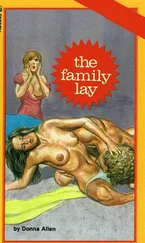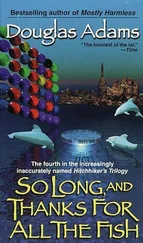“You haven’t expelled him,” I repeat in a stunned monotone. Can this really be happening?
“That’s right. We haven’t,” says Lesley. “There is no George Donbavand. He was never here at the school for us to expel.”
Chapter 3
Standards of Evidence and the Almost Hanging of Perrine
Perrine Ingrey did not go to jail for the murder of Malachy Dodd. There were no witnesses who could say for certain that she had killed him, and she denied it with more and more outrage and incredulity every time she was asked.
One night when Perrine was asleep, the rest of the Ingrey family discussed the upsetting subject. “I know she did it and so does Lisette,” said Allisande. “We heard her say ‘Ha!’ at the precise moment that Malachy’s body hit the ground.” (The Dodds, oddly, did not seem to have heard this clearly audible “Ha!,” and neither did Bascom and Sorrel. Perhaps they all mistook it for carried sound from the other side of the river, or a drunken reveler on the deck of a passing yacht. If so, they were indeed mistaken. It was Perrine’s voice without a doubt, and instantly recognized by her two sisters.)
Lisette, the eldest, disagreed with Allisande that Perrine must be guilty. She strongly suspected that her youngest sister was a murderer, but she was not willing to use the words “must be” without proper evidence. “The ‘Ha!’ doesn’t prove she killed him,” Lisette told the other three. “All it proves is that she was pleased to see him fall to his death.”
“He couldn’t have fallen by accident,” said Sorrel. “The window in Perrine’s bedroom is set too high in the wall for that to be possible.”
“We can’t know what happened for sure since we weren’t there,” said Bascom, who, like Lisette, had strict views about standards of evidence. “For example, maybe Perrine was trying to perform some kind of strange trick, and it went wrong.”
“What trick?” Sorrel’s voice brimmed with disbelief.
“I don’t know! Or . . . maybe she wasn’t planning to let go of him, but he slipped out of her grasp.”
“You’re saying she was dangling him out of the window for fun?” said Sorrel sharply. “Or to scare him? Oh, well, that’s all right then! Look, instead of wasting time speculating, why don’t we concentrate on deciding what to do?”
Bascom, Lisette and Allisande were shocked. Sorrel did not usually say organized-sounding things like that.
“Do?” said Bascom (which was a more typically Sorrel-ish thing to say).
“Yes,” said his wife. “Everybody for miles around believes Perrine murdered Malachy, including all of us. Something is going to happen. Somebody—not the Dodds, who are too dull-witted, but somebody else—will try to avenge Malachy’s death. Can’t you feel the darkness in the atmosphere? I can. I can feel hatred for Perrine brewing, everywhere I go. Something will befall her. She hasn’t noticed, but I have. There is danger all around, and not only for Perrine—for us as well. What if someone throws boiling water in my face one day for bringing an evil child into the world?”
“Mum!” Lisette and Allisande protested in unison. “Don’t scare us!”
“I’m afraid I might need to scare you in order to protect us all,” Sorrel murmured.
Bascom asked for evidence that the danger to their family was real, but Sorrel didn’t have any.
Perrine carried on as usual—devious, charmless and prone to tantrums. She stopped being willing to answer questions about her role in Malachy Dodd’s death. She started to say, “I’ve put all that behind me,” whenever the subject came up. This only set the village folk even more passionately against her. It was whispered on street corners and in local hostelries that Perrine Ingrey now referred to Malachy’s tragic death as if it were her ordeal and not his—she was the main victim, and she had survived and moved on.
One day, during an away rounders match at a local school, Perrine was standing on the grass of the sports field under a tree and suddenly felt something fall around her neck. It was a noose made of rope that had been dropped from above her head. She looked up. There was someone sitting on one of the higher branches of the tree. Their denim jeans and black running shoes were visible but not their face, so Perrine never saw who her attacker was.
(You’re starting to think that Perrine is about to get murdered, aren’t you? Wait and see.)
She felt the noose tighten around her neck as her mysterious enemy pulled the rope from above. Luckily for Perrine, her next impulsive action saved her life. She grabbed at the rope with her hands, so that as it tightened and tightened, and as she was hoisted slowly into the air by whoever was sitting on the branch of the tree, her fingers were just about able to pull the noose away from her neck so that she could still breathe, though only barely. Her fingers were badly hurt, but her windpipe was not crushed.
“Hanged by the neck until dead”—isn’t that the saying? What a chilling phrase.
Perrine Ingrey didn’t die. Not on that occasion. Do not think you can work out what is going to happen before I tell you, because you can’t. It’s impossible. There are some stories so unimaginably horrifying that no normal imagination could produce them. Even people who had known the Ingrey family for years would not have been able to predict what happened. Afterward—after Perrine was eventually murdered—still nobody guessed who had done it, why or how. To this day, if you visit the vicinity of Speedwell House, you will hear the local legends and rumors about Perrine. From the crab-and-lobster-strewn tables of the Anchorstone Café in Dittisham to the steeply sloping streets of Dartmouth with their rows of little art galleries all selling identical paintings of pastel-colored beach huts, and all up and down the River Dart on every kind of boat you care to mention, you will hear the name Perrine carried to you by the wind and whispered by the trees on the river bank. Sometimes it’s as if the water itself is gushing the name, as if hundreds of wooden oars are pushing it through the foam toward you: “Perrine, Perrine, Perrine!” (But of course many people are quite fanciful and melodramatic, so I wouldn’t necessarily advise that you trust anyone who asks you to believe that water and trees can speak.)
One thing is for certain: most of the human beings who live in or around Kingswear still tell the terrible tale of Perrine Ingrey. And the irritating thing is that when they reach the end, they all say the same thing. They all say: “The mystery was never solved. No one knows who murdered Perrine Ingrey.”
That is, quite simply, not true. I know who murdered Perrine. And those who don’t know could easily work it out if only they used their brains. All the information they need is in their possession by the time they reach the end of the story. It’s really as plain as day, but they are not capable of guessing the truth, even though there is only one logical possibility.
(To be fair, I’m not sure I would have been able to work it out either if I hadn’t been told.)
Let’s get back to Perrine, who is hanging by her neck from a tree. How thoughtless of me to leave her dangling there while I digress and rant about people’s lack of imagination.
Perrine might have died eventually if her would-be murderer had persisted. Even with her fingers between her neck and the rope, there wasn’t much room for breathing. Fortunately for Perrine, her killer saw that she had grabbed the noose with one hand, and this disheartened him or her. “Oh dear,” he or she must have thought. “A noose is supposed to have a neck in it and nothing else. My plan has gone dreadfully wrong.” The miscreant decided to give up and take off. Perrine later told her family that she heard footsteps a few seconds after she dropped to the ground. As she lay there choking and rubbing her wounded neck with her swollen, bruised fingers, she heard her attacker running away.
Читать дальше











